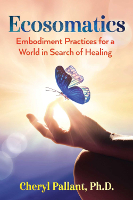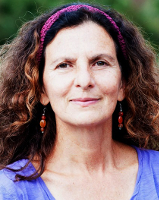
Image from Pixabay
Try This
Make a list of the ways you are thriving and the areas that fall short. In reviewing your list, look for patterns that correspond to strengths but also weaknesses. A weakness may indicate an area that is calling for attention.
Many of us tend to pursue areas of strengths and ignore areas of weakness. There’s good reason to use strengths. They reinforce competence and make use of abilities toward the smooth running of our day. They provide satisfaction and make us feel valuable. But there’s also good reason to explore and utilize weaknesses.
Learning Something New
Learning something new establishes new synaptic paths, making our brain and the rest of us more durable. Mind and thinking are refreshed and spark ideas. They contribute to attaining a goal and moving on to consequent ones. They reinforce the confidence and satisfaction that comes from self-reliance and increase consciousness.
Competence in a strength area fans the ego, yet for the sake of development, I encourage exploring a weak area. Every intelligence provides a unique set of tools for perceiving. An ability in one area can be applied elsewhere and provide a missing piece, shaping connections between areas that initially appear unrelated.
For instance, a naturalist intelligence, the ability to observe and understand nature, gets us to notice changing water levels in a marsh and how this wetland is pivotal to minimizing erosion. It allows us to understand how foods like apples and broccoli rely on pollinating bees. An understanding of marshes and pollination may lead to developing a trash interceptor or a vaccine. It may provide a potent metaphor that provokes the mind to leap between ideas to forge a vital connection. It favors relaxing a tendency to specialize and categorize for crossing boundaries for merging disciplines and developing new ideas.
Finding New Ways of Perception
Along these lines is the value of identifying your primary way of perceiving, your perspective, and finding another perspective to explore, at its core a pivotal creative process. Shift whatever part of yourself you readily identify with.
For instance, what information is available to you when you read these words as a global citizen instead of as an employee? Or rather than identifying yourself as the subject, see yourself as the object. What information comes to the foreground when you imagine your neighbor looking upon your life? How does your pet see you? How does a tree or stream experience you? What happens when the biofield influences you?
Entertaining multiple perspectives moves us out of the bias of our perspective into greater knowing. We experience the expansion where the many dimensions of being and knowing meet. We end up listening to bodying and to the living Earth. We encounter an energetic union, the intermingling of interconnection. We discover our body as familiar and unfamiliar, our inquiry continually placing the edge of our limits further and further afield while also riding on our attention.
You and me and us as them. Air as breath and soil as home. A new way of seeing and sensing. A map of hope, health, and resilience.
Refining Who We Are
Entertaining multiple perspectives supports identifying themes and patterns in our life, refining who we are, and maturing. We get to nurture what longs to emerge, a nascent ability awaiting its turn. We can retire what no longer works in favor of what does. We can undo the harm foisted upon us by family, school, and culture and cultivate qualities and interests that are sustainable and embrace the best of who we are. We can toss out self-defeating behavior to free up living to the potential of the greater good of which we are an intrinsic part.
We pursue such activities because genuine growth is mutually beneficial. Thriving depends on working with systems be they physiological, ecological, or energetic. Thriving recognizes that genuine growth takes place amid air, sun, family, community, and the biofield. Any one action prompts other responses and actions in subtle and obvious ways.
Consider the impact of a smile. Consider the impact of encouraging versus discouraging words. Consider the impact of a well-intentioned touch which calms, lowers blood pressure, reduces inflammation, and increases oxytocin levels and overall health, among the reasons caregivers are encouraged to reach out as is appropriate with patients. Consider investigating a glimmer at the outskirts of your awareness.
We pursue such actions because something within spurs us on and we’ve learned to trust the nudges and glimpses from intuition and the wisdom of the body. We pursue them because going beyond personality and culture reaches toward something deeper within us that is core to the well-being of personal, collective, and planetary health. We step onto the edge of knowing, awareness blowing our hair and opening a gate of the mind. Learning is within reach.
Thriving Invigorates Us
The untamed, unknown, invisible world rises up to our senses. Passivity meets activity. Part of us speaks as another listens. Reaching out is a reaching within. The world enchants and surprises with its every expression, with how the wind howls, an engine rumbles, and a log floats down river. We are enchanted with the sound a friend’s voice and the music of silence.
When thriving, we are accessing and engaging the flux of creation. The act of creating, be it for art, commerce, or an environmental project, taps into the fundamental workings of the universe, which is continually connecting, configuring, and transmuting. Each moment births a thought, a book, a chair, a tadpole, a stream, a cloud. By consciously participating in each moment, awareness tuned to its unfolding, the veil between worlds lifts and we see the steps underfoot and ahead. Visible is how one action and event leads to another, be it seed into a harvest, rain into flooding, or despair into an evolutionary shift.
Active Participation Revelations
This active participation reveals details everywhere, in the stretch of our fingers, in the completion of an exhalation, in how we say hello, body ourselves, and look outward. Presence reveals itself in absence, stillness in motion, a gift in sorrow. We step back from our life to be in step with life and to better know ourselves and another.
We perch on the crest of a mountain among lightning bugs. We listen to the shrill call of cicadas. We walk toward the edge of the familiar because something about being present to the usual and the unusual nourishes us in an uncanny way. Something we hadn’t noticed before now enlivens us, every phenomenon containing the potential to reveal some new marvel.
Where we’ve been links us to what wants to emerge and urges action. Looking ahead helps along with sensing our feet meeting the ground and our gaze looking a few steps ahead. We stay present to What Is: this word, this memory, this pain, this curiosity, this root, this stone, this storm, this hope, this need.
If fear arises, we recognize its appearance and do what may be needed to mitigate harm, but we do not let it hold us back. The rapid heartbeat or torpor teaches us about our body. The mind’s chatter teaches us how to use breath for adjusting the volume.
We step boldly with a watchful eye. We watch how imagination, intuition, the song of a robin, the rumble of thunder, despair, and hope wake us up. We take a chance and let chance take us.
Breaking Through
Thriving transforms a setback into a breakthrough, a tension into a release. An opening develops where previously there was none. We work toward hitting a stride and establishing a flow. The subtleties and intricacies of the moment captivate us, the light falling on the desk, our jaw clenching and unclenching, the scurry to jot down a note, the need to make our voice heard, and take meaningful action. The narrow focus provides a freedom that simultaneously links to a broader view and deeper breath. What lies beneath, above, and beyond is always more than our eyes can see and our hands can reach, yet we extend ourselves anyway.
Connections, always available, bring us home to the body. We are conscious of how we move and what moves us. We recognize the world making us and us making the world. We attend to the events arising each moment, some arriving seemingly from nowhere, others easily trackable. All are worthy of our attention and reinforce consciously connecting, an awakening continually in process that involves us living from our depths, from the hidden and visible, from mystery and dream, and nudges that beckon. “Look here,” it says. “Follow this.” And we do because the extraordinary complexity of the world is always with us, is us, if only we would sit, stand, walk, look, feel, remember, and take the time to consider the body as matter and energy, temple and field, an intermingling of you and everyone and everything else, too vast for any one page or mind.
Thriving is connected to evolutionary change. It touches into the core of who we are and to the pulse of life. Thriving welcomes stasis, homeostasis, and growth, alert to cycles of breath, of cell formation, of social and political trends, of layers of soil and atmosphere, of people who come into our life and depart, of periods of hardship and periods of ease.
Thriving is connected to an evolution of consciousness. Consciousness grows through reflection and practices that recognize What Is while also challenging the status quo. Sense, accept, and question. It grows by moving the body and the mind. It grows by answering the knock at the door of awareness and tending to the needs of me and you. It grows by learning how to engage in reciprocity with friend, stranger, nature, and nurture. It grows by feeling deeply into the physical, energetic, and ecological body that is ours and finding the body we did not recognize as ours.
Thriving positions us on a personal and collective edge welcoming transformation. Just this moment. Here, now, with these perfect and ever-shifting conditions, a recognition, too, about how we’ve been influenced and conditioned. What does it take to get out of our own way? What does it take to activate the self we always knew ourselves to be for the world dreamed possible? What does it take to balance at the enigmatic edge with the scintillating energy of our body as home contributing to the delivery of a welcome future? What does it take to wake up the dormant abilities that make today and tomorrow more livable?
Thriving involves personal and collective well-being in connection to the natural world, a necessary inclusion. The prosperity of an individual extends to the prosperity of a group, which extends to the health of the entire ecological community as evidenced in the COVID pandemic and climate disruption. Harm to another harms us; assisting another helps us. Genuine thriving recognizes that supporting one body supports all bodies.
Copyright 2023. All Rights Reserved.
Adapted with permission of the publisher,
Bear & Co., an imprint of Inner Traditions International.
Article Source or Book by this Author:
BOOK: Ecosomatics
Ecosomatics: Embodiment Practices for a World in Search of Healing
by Cheryl Pallant
 In this practical guide, Cheryl Pallant explains how ecosomatics—embodiment work for personal and planetary health—can help us shift our consciousness through expanded listening with all our senses and embracing the interconnections between our inner and outer worlds. Throughout the book, the author offers ecosomatic and embodiment exercises to help you expand perception, develop somatic intelligence, let go of limiting beliefs, lessen fear, anxiety, and alienation, and open to levels of awareness that allow you to tune in to a greater vision of what is humanly possible.
In this practical guide, Cheryl Pallant explains how ecosomatics—embodiment work for personal and planetary health—can help us shift our consciousness through expanded listening with all our senses and embracing the interconnections between our inner and outer worlds. Throughout the book, the author offers ecosomatic and embodiment exercises to help you expand perception, develop somatic intelligence, let go of limiting beliefs, lessen fear, anxiety, and alienation, and open to levels of awareness that allow you to tune in to a greater vision of what is humanly possible.
Revealing how to incorporate embodiment into everyday life, this guide shows how the body is a process that is part of nature, not separate from it, and that by embarking on the transformative inner journey, we can bring healing to the world around us.
For more info and/or to order this book, click here. Also available as a Kindle edition.
About the Author
 Cheryl Pallant, PhD is an award winning author, poet, dancer, healer, and professor. Her newest book is Ecosomatics: Embodied Practices For a World in Search of Healing. Previous books include Writing and the Body in Motion: Awakening Voice through Somatic Practice; Contact Improvisation: An Introduction to a Vitalzing Dance Form; Ginseng Tango; and several poetry collection including Her Body Listening. She teaches at University of Richmond and leads workshops throughout the U.S. and abroad.
Cheryl Pallant, PhD is an award winning author, poet, dancer, healer, and professor. Her newest book is Ecosomatics: Embodied Practices For a World in Search of Healing. Previous books include Writing and the Body in Motion: Awakening Voice through Somatic Practice; Contact Improvisation: An Introduction to a Vitalzing Dance Form; Ginseng Tango; and several poetry collection including Her Body Listening. She teaches at University of Richmond and leads workshops throughout the U.S. and abroad.
Visit the author's website at CherylPallant.com.


























